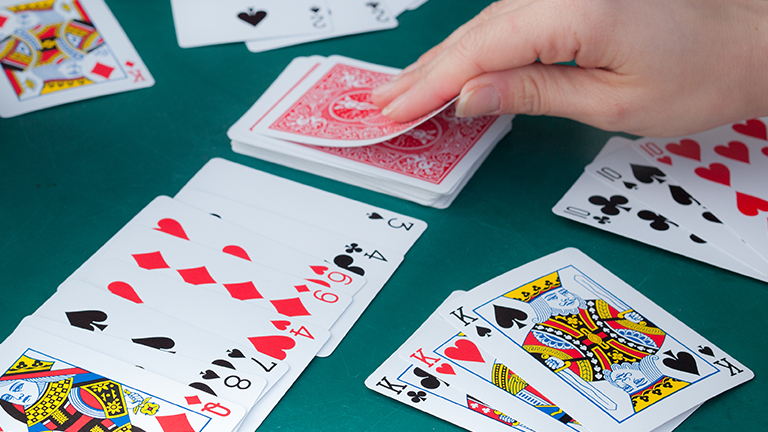Rummy Card Game History: From Ancient Times to Rummy
Card games have entertained and challenged people for centuries, combining strategy, skill, and social interaction. From ancient civilizations to today’s digital platforms, the journey of card games is a fascinating tale. Let’s explore how these games evolved over time, leading to the ever-popular Rummy card game.
Ancient Roots of the Rummy Card Game

China’s Early Innovations
The history of card games dates back to 9th century China during the Tang Dynasty. These early cards were linked to a game known as “leaf” and were sometimes used as a form of paper currency in gambling. This laid the foundation for the structured card games we know today.
Islamic Influence and the Mamluk Sultanate
By the 11th century, card games had spread to the Islamic world. The Mamluk Sultanate in Egypt introduced a deck with four suits, resembling the modern card deck. This innovation helped shape how card games evolved across different regions.
Card Games in Europe: Adapting and Evolving
The Arrival of Card Games in Europe
Card games reached Europe in the late 14th century through trade routes. The earliest mentions appear in Catalonia, Spain, and Switzerland. From there, they quickly spread across the continent.
Suits and Symbols: The Birth of Modern Decks
European countries personalized the decks to match their cultures. The French suits — hearts, diamonds, clubs, and spades — became the most popular and are now used worldwide.
The Rise of Modern Card Games

Whist and Bridge: Strategic Beginnings
By the 16th century, card games like Whist (an early form of Bridge) gained popularity in England. These games emphasized strategy and teamwork, paving the way for more complex card games.
Poker and Its Wild West Fame
Card games continued to evolve, with Poker — influenced by early European games — taking center stage in America’s Wild West. It became a symbol of risk and reward, often associated with cowboys and saloon life.
Rummy: A Global Sensation
Origins and Worldwide Spread
The Rummy card game is believed to have stemmed from a Spanish game called Conquian. By the 19th century, different versions of Rummy were being played in Europe and the Americas.
Rummy in India: A Cultural Favorite
Rummy found a special place in India, quickly becoming a staple at social gatherings and festivals. Its simple rules, combined with strategic depth, made it a household favorite. Today, Indian Rummy remains one of the most popular variations of the game.
The Digital Revolution of Rummy
With the rise of the internet, traditional card games like this card game moved online, attracting a whole new generation of players. Platforms like Teen Patti Stars have made Rummy more accessible than ever, allowing people to play anytime, anywhere. These online versions retain the essence of classic Rummy while adding exciting features and competitive elements.
Conclusion: The Timeless Appeal of Card Games
The journey of card games — from ancient Chinese leaf games to online Rummy tables — shows their lasting charm. These games have crossed cultures, connected generations, and evolved with time. Today, when you shuffle a deck or join an online game, you’re not just playing — you’re part of a rich historical tradition.
Frequently Asked Questions (FAQs)
1. Where did card games originate?
Card games are believed to have started in China during the Tang Dynasty in the 9th century.
2. How did card games spread to Europe?
Card games likely traveled to Europe in the late 14th century through trade routes, first appearing in Catalonia, Spain, and Switzerland.
3. What are the traditional suits in European card games?
The French suits — hearts, diamonds, clubs, and spades — became the standard in most modern card decks.
4. How is Rummy different from other card games?
Rummy is a matching-card game where players form sets (cards of the same rank) and runs (sequences of consecutive cards). The goal is to draw and discard cards strategically to create these combinations.
5. Is Rummy played the same way worldwide?
While the basic rules remain similar, Paplu has many regional versions, including Indian Rummy, Gin Rummy, and Kalooki — each with slight variations in rules and strategies.
6. How has the digital era impacted traditional card games like Paplu?
The digital revolution has made the game more accessible. Platforms like Teen Patti Stars allow players to enjoy the game online, bringing together enthusiasts from around the world.
7. Are ancient card games still played today?
Yes! Games like Poker, Bridge, and Rummy have evolved but still retain their ancient roots, keeping the spirit of classic card games alive.
8. Why is Rummy so popular in India?
Rummy is deeply embedded in Indian culture and is often played during festivals and family gatherings. Its mix of strategy, skill, and luck has made it a favorite across the country.
Step into the World of Card Games with Teen Patti Stars!
The rich history of card games has seamlessly transitioned into the digital age — and you can be a part of it. Join Teen Patti Stars for an unforgettable gaming experience, whether you love Rummy or Teen Patti.
Our platform combines the charm of classic card games with modern features, competitive challenges, and real-time fun.
🎴 Ready to embrace the legacy of card games?
Join Teen Patti Stars today and start your legendary card gaming journey!


One Comment